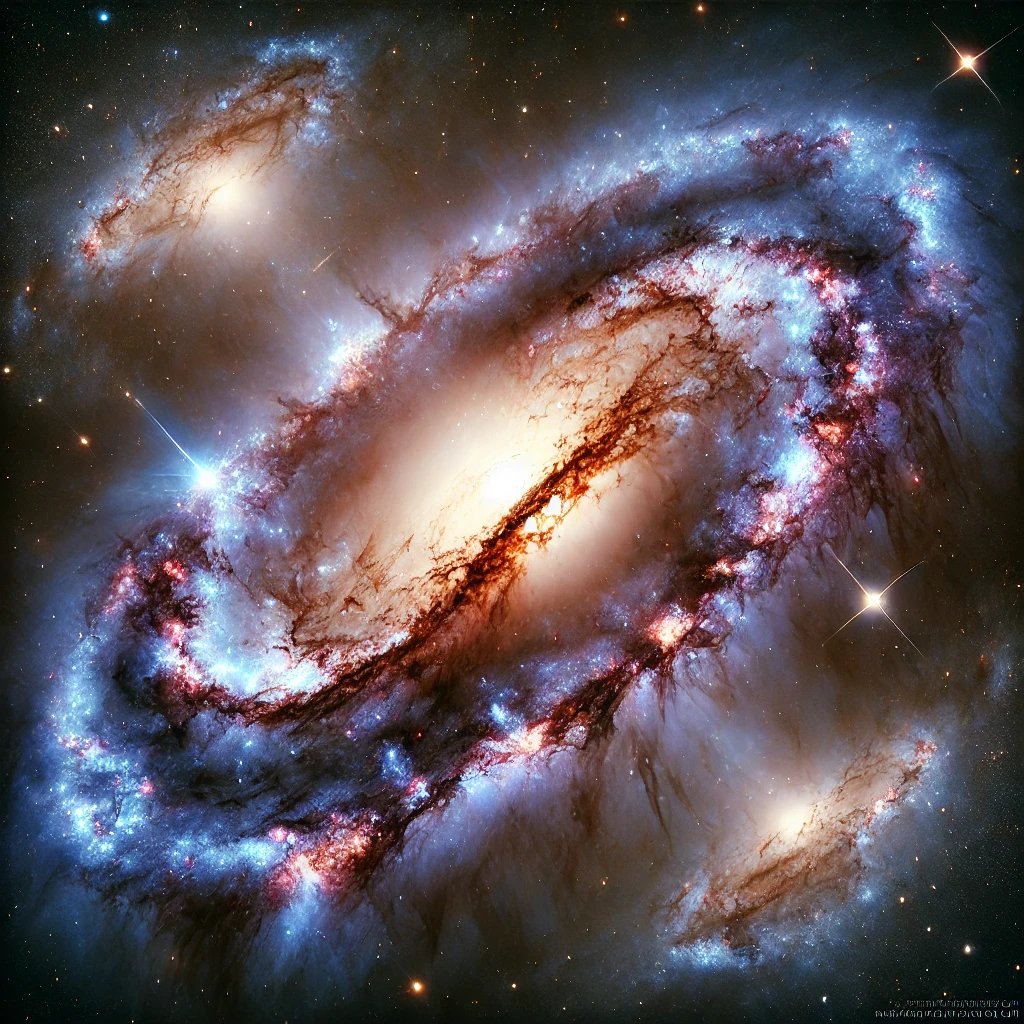Astronomers have recently observed a fascinating event in the cosmos—the merging of two galaxies 12.8 billion years ago. This cosmic collision is set to create what is known as a “monster galaxy,” one of the most luminous objects in the Universe. Understanding these merging galaxies in the early Universe is crucial for shedding light on the evolution of galaxies and the formation of supermassive black holes.
The Role of Quasars in Galaxy Mergers
Quasars are incredibly bright celestial objects powered by the inflow of matter into supermassive black holes at the centers of galaxies. These brilliant objects often emerge during the early stages of galaxy evolution. The prevailing theory suggests that when two gas-rich galaxies merge, their gravitational interaction causes gas to spiral toward the supermassive black hole in one or both galaxies, igniting quasar activity. This process not only lights up the quasars but also plays a key role in the evolution of the galaxy itself.
Unveiling the Earliest Pair of Quasars
To explore this theory further, an international team of astronomers, led by Takuma Izumi, utilized the powerful ALMA (Atacama Large Millimeter/submillimeter Array) radio telescope. Their target was the earliest known pair of close quasars, discovered by Yoshiki Matsuoka at Ehime University, Japan, using images from the Subaru Telescope. This pair of quasars, located in the constellation Virgo, dates back to the first 900 million years of the Universe.
The Significance of ALMA Observations
The ALMA observations revealed critical details about the host galaxies of these quasars. One of the most striking findings was the detection of a “bridge” of gas and dust connecting the two galaxies, a clear sign that they are in the process of merging. This discovery provides direct evidence of the merging galaxies in the early Universe, supporting the theory that such interactions are common in the formative stages of galaxies.
Furthermore, the ALMA data allowed the team to measure the amount of gas within these galaxies. They found that the galaxies are extraordinarily rich in gas, the essential ingredient for star formation. This abundance of gas implies that the merging process will likely trigger a dramatic increase in star formation, leading to a phenomenon known as a “starburst.” The combination of intense quasar activity and a starburst is expected to result in the creation of a super-luminous object, often referred to as a monster galaxy.
The Impact on Our Understanding of the Universe
These observations offer invaluable insights into the early Universe, particularly the processes that lead to the formation of massive galaxies and supermassive black holes. By studying these merging galaxies, scientists can better understand the conditions that prevailed in the early Universe and how they shaped the cosmos we see today.
In conclusion, the discovery of this pair of merging galaxies offers a glimpse into the violent and dynamic processes that dominated the early Universe. The formation of a monster galaxy from these mergers highlights the importance of such cosmic events in the evolution of the Universe. As we continue to explore the heavens with advanced telescopes like ALMA, our understanding of the Universe’s history will undoubtedly deepen, revealing more about the origins of the galaxies and the black holes that reside within them.











